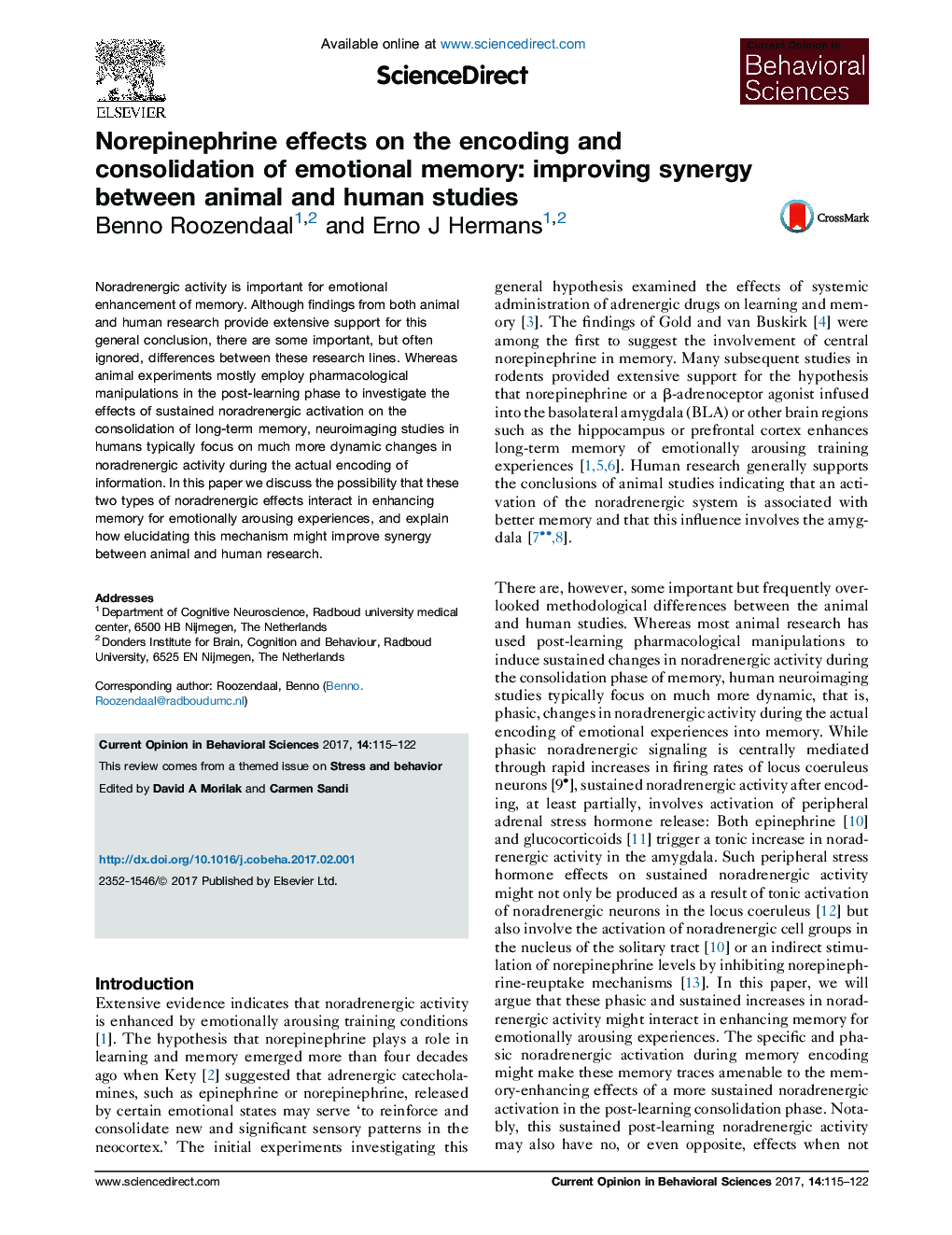| Article ID | Journal | Published Year | Pages | File Type |
|---|---|---|---|---|
| 5735905 | Current Opinion in Behavioral Sciences | 2017 | 8 Pages |
Abstract
Noradrenergic activity is important for emotional enhancement of memory. Although findings from both animal and human research provide extensive support for this general conclusion, there are some important, but often ignored, differences between these research lines. Whereas animal experiments mostly employ pharmacological manipulations in the post-learning phase to investigate the effects of sustained noradrenergic activation on the consolidation of long-term memory, neuroimaging studies in humans typically focus on much more dynamic changes in noradrenergic activity during the actual encoding of information. In this paper we discuss the possibility that these two types of noradrenergic effects interact in enhancing memory for emotionally arousing experiences, and explain how elucidating this mechanism might improve synergy between animal and human research.
Related Topics
Life Sciences
Neuroscience
Behavioral Neuroscience
Authors
Benno Roozendaal, Erno J Hermans,
